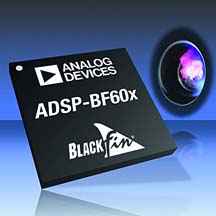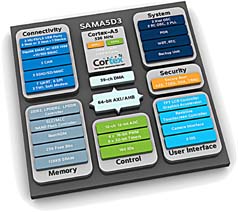The majority of design engineers have aspects of security to contend with in their designs. They may need to have a microcontroller (MCU) that is protected against tampering and against software theft, they may have a communications link that needs encryption, or they may be designing a security vision system for a car or a train. We talked with some industry leaders in this area and wanted to share with you their insights.
Christian Wiebus, senior director product management, Secure Identity product line, at NXP Semiconductors told us that “Secure microcontroller design, as of today, needs to care about many aspects to ensure secure systems. The two most important ones are: resistance against side channel attacks, which needs to be evaluated in the simulation phase, and resistance against fault injection (e.g., laser light) in order to avoid manipulation of the program flow. The third point is resistance against reverse engineering by layout measures and anti-cloning features like Physically Unclonable Function (PUF) technology, which is currently designed in the future generation of NXP's SmartMX2 high security microcontrollers.”
NXP has licensed Intrinsic ID's PUF technology for use with its SmartMX2 smart card and secure element chips. PUFs are an innovative way of safeguarding individual chips from data theft by using the unique 'fingerprint' inherent in every semiconductor device to protect its encryption key, making it very hard to clone and thus reverse-engineer and compromise security microcontrollers.
Mark Shapiro, product marketing director for embedded security solutions products at INSIDE Secure said, “At its core identity and security rely on the integrity of the device that is storing, transmitting, or consuming the identity credential. So any corruption or loss of integrity in the device presents a risk that that information and identity could be compromised. Our platform solution provides complete secure boot function, which is needed to make sure that only the software images from an authorized source are booted, corrupted software images are never booted; and downgrading software images to a version with possibly known security holes is prevented. The software image can also be encrypted preventing software reverse engineering.”
This type of encryption operation as well as many other commonly used encryption-based security methods such as SSL/TLS and IPSec can be very power and memory intensive. Inside's Secure Platform consist of Hardware and Software components that form the foundation of the secure platform for mobile communications and consumer electronics appliances where authentication and process encrypted content using standard protocols are required. Mark said “this set of components provide a low cost, low power, and small footprint solution for system and platform integrity and symmetric cryptographic acceleration services to applications.” The company's Secure Platform has a number of elements, including Secure Boot, Secure Storage, Secure Execution, Hardware Root of Trust, Secure Communication, and Secure Asset Store.
Another aspect of security is using high-performance processors to analyze images. Analog Devices knows something about that. Their latest 1-GHz dual-core Blackfin processors are optimized for embedded vision applications, and feature a high-performance video analytics accelerator, called the Pipelined Vision Processor (PVP). The PVP is comprised of a set of configurable processing blocks designed to accelerate up to five concurrent image algorithms, enabling a very high level of analytics performance. These processors fit many applications such as automotive advanced driver assistance systems, industrial machine vision, and security/surveillance systems.
“With over 25 billion mathematical operations per second available from the PVP, this accelerator combined with two Blackfin cores provides the basis for a very powerful and flexible processor,” said Colin Duggan, director of marketing. “Our goal with these new Blackfin processors is to offer a high level of analytic functions at a great price with very low power consumption, enabling a much broader deployment of embedded vision systems.”
We also asked Jeff Bier, founder of the Embedded Vision Alliance, what he thought of the new ADI processors. “Vision algorithms are computationally demanding and very diverse. High-performance, cost-effective programmable processors are essential for these applications,” Jeff said. “Analog Devices' has taken a leadership position by fielding a powerful architecture targeting embedded vision applications.”

Blackfin processors feature accelerated vision analytics and low power consumption. The ADSP-BF608 and ADSP-BF60 processors feature dual 500-MHz cores, up to 4.3 Mbits of SRAM, and a dedicated vision accelerator to enable broad adoption of multifunction analytics into embedded-vision applications . Called the Pipelined Vision Processor (PVP), the accelerator has a set of configurable processing blocks that accelerate up to five concurrent image algorithms. Each core has two 16-bit multipliers, two 40-bit accumulators, two 40-bit ALUs, four video ALUs, and a 40-bit shifter. They come in a 19 x 19-mm CSP BGA package and typical power consumption for the BF609 is 400 mW.
Analog Devices

INSIDE Secure recently introduced innovative near-field communication (NFC) tags for interaction between mobile devices, like smartphones, and a broad range of medical, communications, entertainment, and other electronic devices. In addition to a conventional NFC contactless interface the NFC Forum Type 4 tag also provides a one-wire interface that allows the tag to act as a low-cost wireless communications bridge between two devices.
This system could be used to establish Wi-Fi connectivity for the first time between an NFC device, such as a tablet, and a new wireless access point, or to start transferring data, through the tag, between the NFC and host devices. The tag is offered in two memory configurations. The VaultIC 151D has a 1.5-Kbyte file system, while the VaultIC 161D has a 16-Kbyte file system size.
INSIDE Secure
www.insidesecure.com

ATMEL
The SAMA5D31 is a Cortex-A5 processor-based microprocessor operating at 536 MHz and providing 850 DMIPS. The device features a floating-point unit, 10/100 Ethernet, HS USB, and an LCD controller. It also has state-of-the-art security features with a secure bootloader, Advanced Encryption Standard (AES), Triple Data Encryption Standard (TDES), Secure Hash Algorithm (SHA) and True Random Number Generator (TRNG).
Atmel
www.atmel.com
Advertisement
Learn more about Analog DevicesAtmel, USAINSIDE SecureNXP Semiconductors





